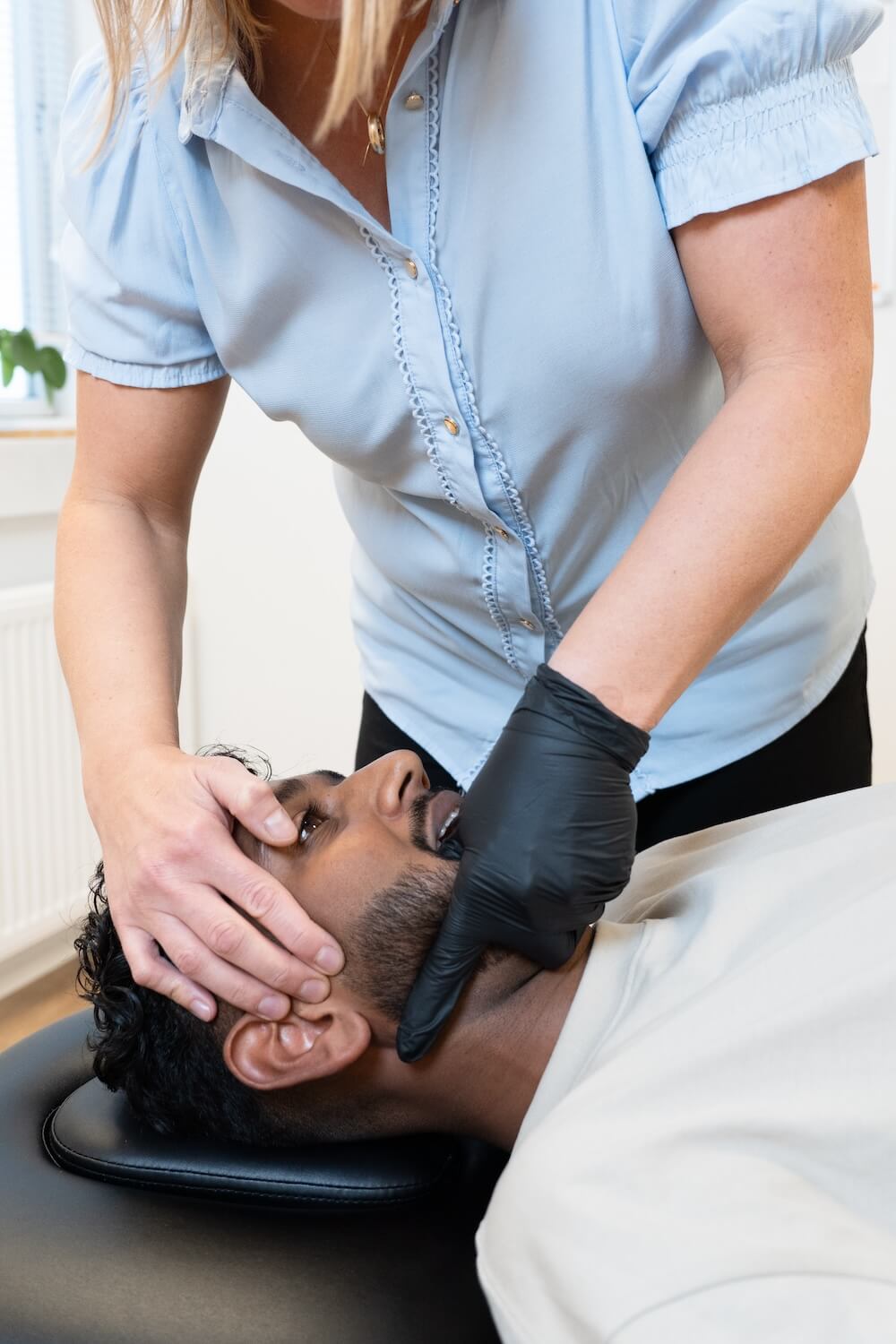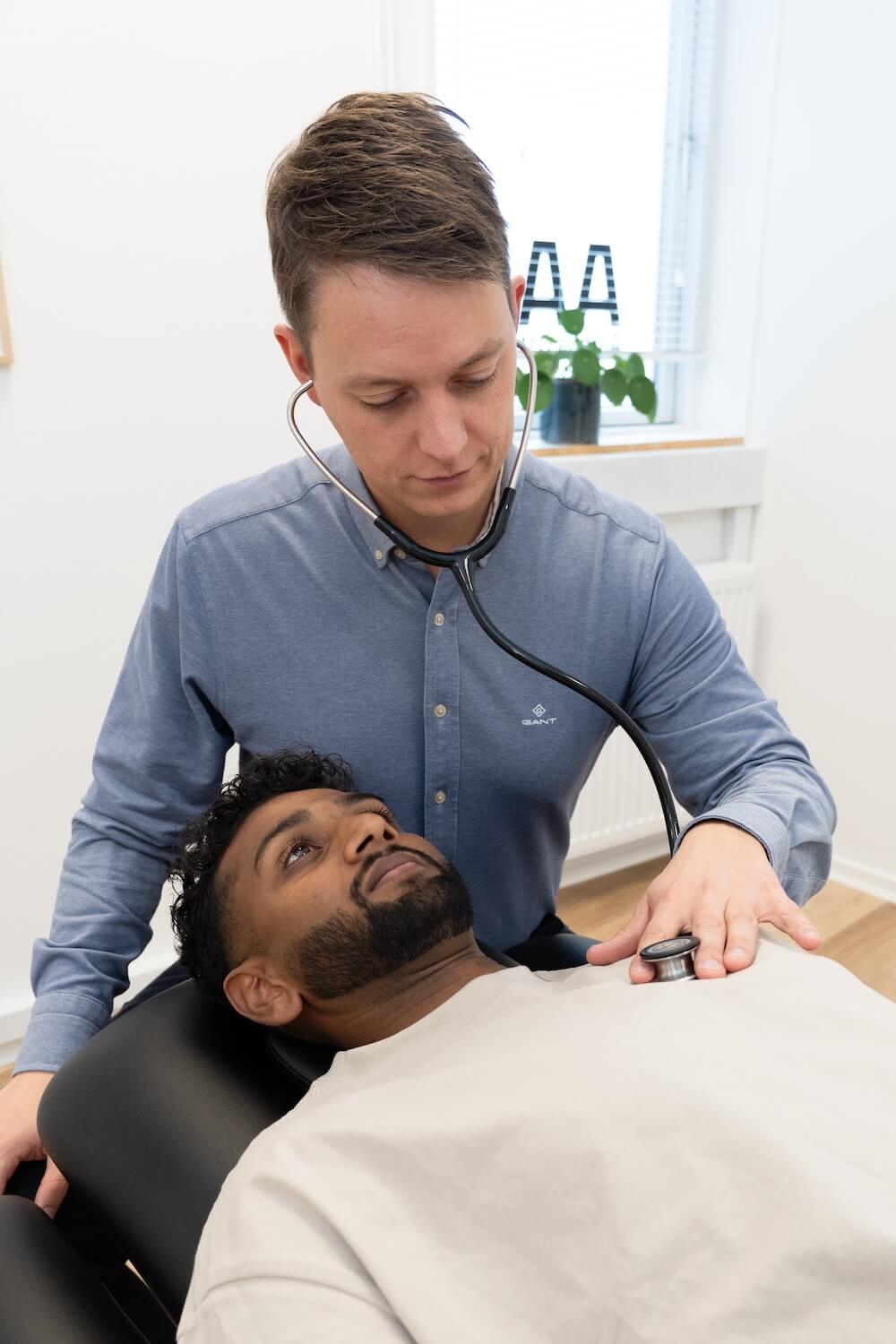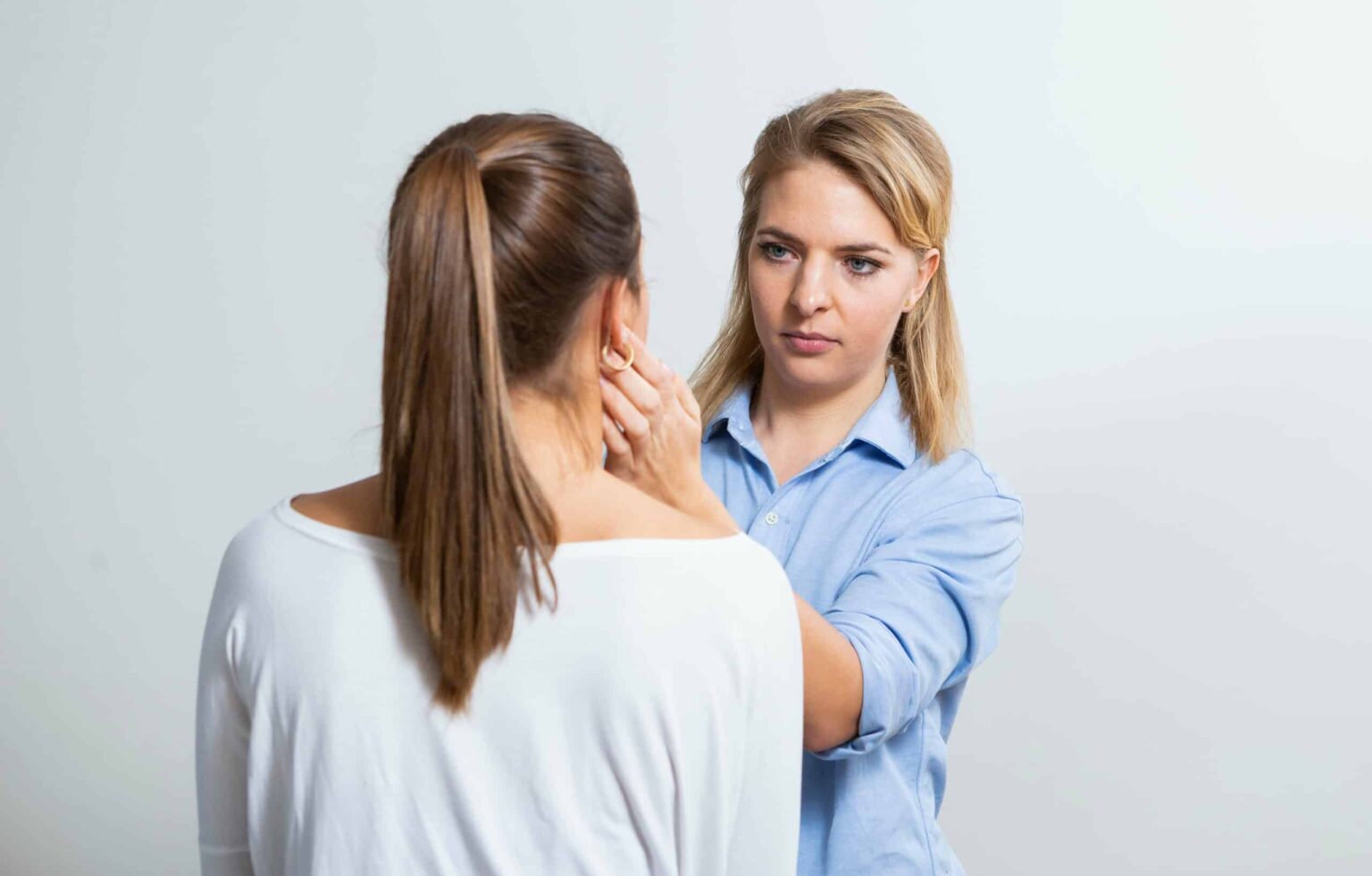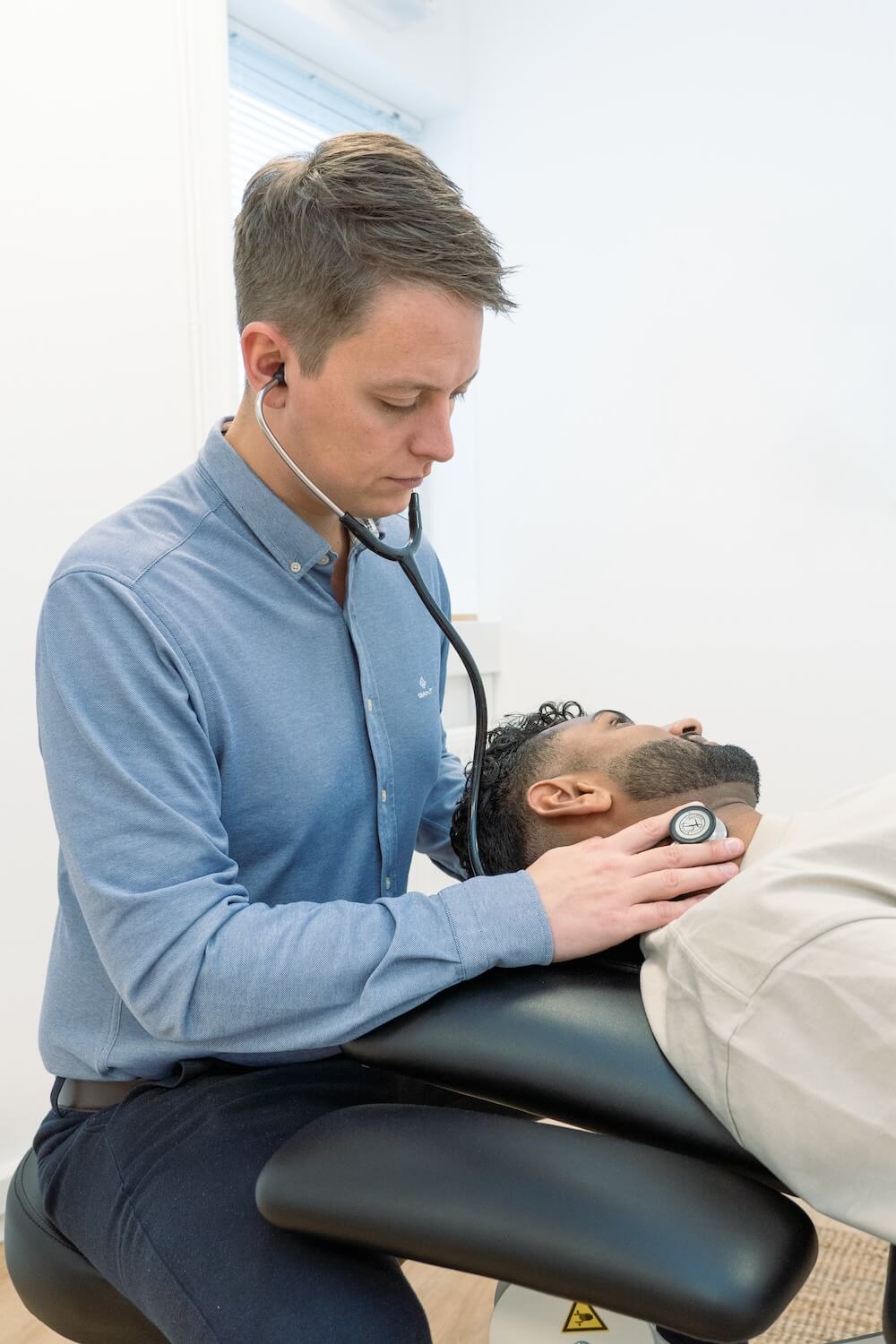We treat
Tenosynovitis
Learn more about tenosynovitis and its treatment
What is tenosynovitis?
Tenosynovitis is a frequently used general term for irritation around the tendons of the hands. It is a non-bacterial inflammatory condition in either the tendon sheath, tendon membrane or in the tendon itself.
The tendon sheaths are a sheath of connective tissue that surrounds all the long tendons at the wrist and ankle joints and are intended to improve the gliding of the tendons during movement. Between the tendon sheath and the tendon itself lies a thin membrane, which is called a tendon membrane. Elsewhere in the body, the tendons are only surrounded by the thin tendon membrane.
Jump to section [Vis]
Definitions and occurrence
Tendon disorders in the wrist are common and are seen in both men and women. However, they are most common in women and occur most frequently between the ages of 35-55. In stressful occupations, the incidence is between 10 and 15% per year, while in non-stressful occupations, such as office work, it is 1-5%.
A distinction is typically made between the following disorders:
- Tenosynovitis is also called tendovaginitis, and is an inflammatory condition that can occur in the tendon sheaths on the top and bottom of the wrist, as well as the flexor tendons extending into the fingers.
- Peritendinitis, can occur in the tendons surrounding tendons in the rest of the body.
- De Quervain’s is the term for inflammation of the thumb’s extensor tendons and/or its tendon sheath.
- Tendonitis is the term for an inflammatory condition of the tendon itself. This condition is not limited to a specific area of the body, but can occur in all tendons.
Source: Sundhed.dk

Causes of tenosynovitis
There can be several causes of tenosynovitis, but the most common cause is overuse of the tendons. Overuse can occur acutely, with a sudden large load, such as a blow or impact on the tendon, or it can occur gradually over time, with repeated monotonous movements with moderate load. It can happen in connection with sports activities or it can be work-related.
Tenosynovitis in the wrist can therefore, for example, occur in connection with racquet sports, handball and golf. In sports, there is also an overload of the tendons, which can either be due to unfamiliar movements or incorrectly used technique. It can also be caused by incorrect use of equipment, for example, a racket or golf club that is not properly adapted to the athlete.
Likewise, tenosynovitis is also seen in rheumatic diseases such as rheumatoid arthritis, psoriatic arthritis, osteoarthritis and Bechterew’s disease.
Pregnant and breastfeeding women are also more prone to developing tenosynovitis (De Quervain’s). The condition is believed to be hormonally related and caused by fluid retention in the woman’s body.
Tenosynovitis is not hereditary in itself, but there may be a genetic predisposition to the condition. This is especially true for people with the HLA B-27 tissue type.
Symptoms and diagnosis of tenosynovitis
The most typical symptom is pain in the tendon when moving the wrist and when lifting. In the acute phase, there may also be pain at rest. The pain may also radiate into the thumb or upwards into the forearm and to the shoulder. There will usually also be the classic signs of inflammation, such as local swelling and warmth and redness of the skin in the area around the tendon. In De Quervain’s, the pain is associated with movement of the thumb and is most often localized on the thumb side of the wrist.
The doctor makes the diagnosis based on the medical history and the presence of the above-mentioned symptoms. Imaging tests such as X-rays and ultrasound scans are not usually necessary to make the diagnosis. However, X-rays are taken if osteoarthritis is suspected.

Aid and treatment of tenosynovitis
The most important thing is to give the tendon and the joint it moves peace and quiet during the first week of an acute inflammatory condition. Relief from the triggering factor(s) will usually cause the inflammation to go away on its own – in this case 2-3 weeks of rest may be necessary. In the case of acute pain and swelling, you can also help by placing ice packs on the inflamed tendon 3-4 times a day for about 20 minutes at a time.
It is important to gradually return to previous function. Even if the pain subsides, the tendon is still weakened and should not be stressed too quickly, which is why it may be a good idea to use a splint to relieve the wrist for a period of time. If a splint or bandage is used, it is necessary to remove it several times a day and move the tendon without strain to maintain movement between the tendon and the tendon sheath/tendon.
Medicine and surgery
In the acute phase, NSAID-type medication can be helpful when the pain is worst. Injection of adrenal corticosteroid in the acute phase can shorten the course, but is often only given if the inflammatory condition lasts more than 2-3 weeks. In cases where conservative treatment has not had an effect after 4-6 months or in the event of repeated relapses, surgery may be necessary to create more space for the tendon. The surgery does not require hospitalization and is performed under local anesthesia, where the surgeon will split the tendon sheath.
De Quervain’s differs from other tendon disorders in that it does not respond to physiotherapy, but usually responds better to steroid injections. In pregnant and breastfeeding women with De Quervain’s, the symptoms usually disappear when breastfeeding stops.
Source: Krop+fysik.dk
Prevention of tenosynovitis
To best prevent tenosynovitis, it is important to be aware of what has triggered the inflammation. It may be necessary to adjust work function and tools so that the area is not overloaded. This also applies in connection with sports, where one must ensure correct use of equipment and technique to avoid overload.
If you are going to perform new, unfamiliar activities, it is a good idea to gradually accustom your body to the different strain. Strength training of the surrounding muscles and careful rehabilitation of the irritated tendon also helps prevent relapse.
New research findings on tenosynovitis
Recent studies show that overstressed tendons need to be further stressed in order to repair themselves. When tendon tissue is stressed by physical activity, it is stimulated to renew cells. When the stress is relieved, this process is slowed down and the tendon is kept completely still, almost no cell renewal occurs. Both too much and too little stress are therefore inappropriate for the tendon. Most people need help finding the right amount of training.

Long-term complications
It is possible to get tenosynovitis more than once if the tendon does not fully recover or if it is exposed to continued overload.
With prolonged inflammation in the tendon itself, scar tissue can form in the tendon, which thickens it. Cartilage or calcifications can also form in or around the tendon. This causes the tendon to become stiffer than normal and small tears can more easily occur inside the tendon when strained and moving the area will therefore feel painful.
In such a case, there is no longer any actual inflammation. Most often, it is instead the tendon’s attachment to the bone that is irritated, and the pain can therefore in some cases change character or location.
Tenosynovitis and aging
As we age, mobility decreases due to changes in connective tissue that become stiffer and less elastic – this is believed to be the reason why the frequency of tenosynovitis increases with age.
Another reason may be a lack of muscle strength in the surrounding muscles. Muscle strength levels off by approximately 1.5% per year from the age of 30 to the age of 80. Reduced muscle strength can lead to the tendon being more easily overloaded. It is therefore a good idea to do strength training to strengthen the muscles and keep the tendon tissue as elastic and mobile as possible.
Source: ÆldreForum

Osteopathic approach to tenosynovitis – physiological causes
Osteopathic treatment focuses on creating optimal conditions for recovery and healing in the body. At Aarhus Osteopathy, we view your problem from a holistic perspective, where the body’s different systems mutually influence each other. Likewise, your understanding of the cause of your problem and any maintaining factors is an important part of osteopathic treatment.
Below are possible explanations for the causal relationship between the mechanical, neurological and vascular systems, and how they each affect the wrist and its function.
Mechanical causes of tenosynovitis:
Mechanically, incorrect positions in the elbow, wrist and hand can cause incorrect tension on muscles and connective tissue, which can lead to compensation and subsequent overload.
Neurological causes of tenosynovitis:
The nerve supply to the structures in the hand comes from the neck and upper back. Therefore, problems in this area can cause disruption to the nerve supply to the hand. Osteopathic treatment normalizes the nerve supply to the muscles, tendons and tendon attachments to restore optimal function.
Vascular causes of tenosynovitis:
To ensure optimal healing, it is essential that there is a good blood supply to and from the injured area. It is therefore important to examine and treat the neck, chest, diaphragm, shoulder and arm, as these are all areas that are important for the blood supply to the wrist and fingers.
Osteopathic approach to tenosynovitis – other causes
Other causes of tenosynovitis that we can also help treat include the following:
Psychological causes of tenosynovitis:
Your general health has an impact on how your body’s energy and resources are used. The body will always prioritize using energy on vital functions before muscular overload. Prolonged stress can therefore also affect the healing ability of tendon tissue.
Stress can be from physical, emotional or chemical stress. Physical stress is an overload of the musculoskeletal system, whereas emotional stress can be of a private nature or work-related and chemical stress deals with the influence of diet, medication and lifestyle. The body cannot distinguish between the different types of stress and treats them the same. Persistent stress creates an altered activity in the nervous and hormonal system which results in a reduced ability to downregulate inflammatory conditions in the body.
Nutritional causes of tenosynovitis:
What we eat also has an impact on the healing process of tenosynovitis. Inflammation is a natural part of the healing process, but should go away relatively quickly. Here it can be important whether what you eat is something that promotes or reduces inflammation in the body. Everything we consume has an impact on our gut bacteria and through it on our immune system.
A diet high in saturated fat, sugar and processed foods promotes and maintains inflammation by exposing the body to chemical stress. An anti-inflammatory diet rich in complex carbohydrates, omega 3 fatty acids and proteins will reduce the level of oxidative stress in the body, thereby reducing the risk of inflammation and supporting the body’s natural healing process. Reducing inflammation will also help prevent overuse injuries such as tenosynovitis.

Often related problems

Jaw joint pain

Kissing disease

Diabetes mellitus

Eye inflammation

Padel injuries

Sedentary work

Nicotine and exercise

